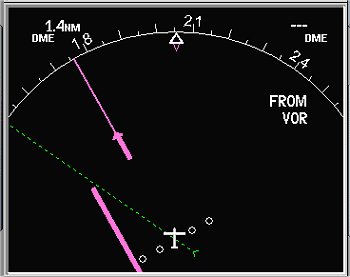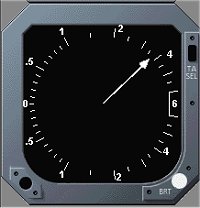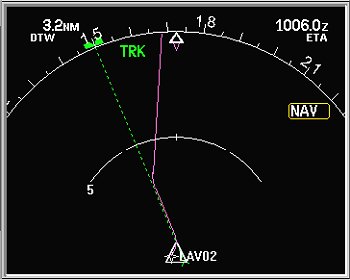7. CLIMB.
As soon as the aircraft is off the ground, PF calls for "Gear up". PNF will select gear up and call "Gear up selected". At 1500ft above field elevation PF calls for "Climb thrust". PNF will push CL button on thrust rating panel and call "Climb thrust set". Normally at 3000ft above field elevation, or at the initial altitude stated in SID one of the climb out scenarios is selected. 
The ND is set to ARC or ROSE mode during takeoff and initial climb out. At minimum 2000ft as stated in the SID, PNF will call departure control, and we get clearance up to FL150. The initial altitude stated in the SID was 5000ft. There are many ways to use the auto flight and FMS on the MD-80. 3 different climb out scenarios are used on the MD-80 in SAS.
In this climb out there is a restriction of 5000ft. This is very common at many big airports. The VERT SPEED/SPD SELECT scenario is preferred in this situation until we have been cleared up to a higher flight level. The autopilot may be engaged already when passing 200ft. Many pilots find the A/P somewhat rough at low speeds and prefer to fly manually until clean aircraft. The handling of the Flight Guidance Control Panel is the same, with or without the A/P engaged. During manual flying, the PNF will set the FGCP and the PF will follow the flight director. With the A/P engaged the PF will set up the FGCP and the A/P will follow the flight director. The difference is that during manual control the PF can disregard the flight director and make the climb out somewhat smother. The A/P will simply just follow the FD. As soon as e have got clearance to FL150, but not before 3000ft, we will switch over to the VNAV scenario instead. The FD will command approximately 1200ft/min in climb until reaching IAS 250kts. When reaching FLAP UP and SLATS IN speeds we will clean up the aircraft. The A/P is engaged and will keep 250kts up to FL100, there the nose will be lowered in order to accelerate to our climb speed. This speed will be calculated by the FMS or we can enter whatever speed we want at the climb page. Normal climb speed is 310-330kts depending of weight.
|
| Go back to Flying the MD80 | Move on to Cruise. |



